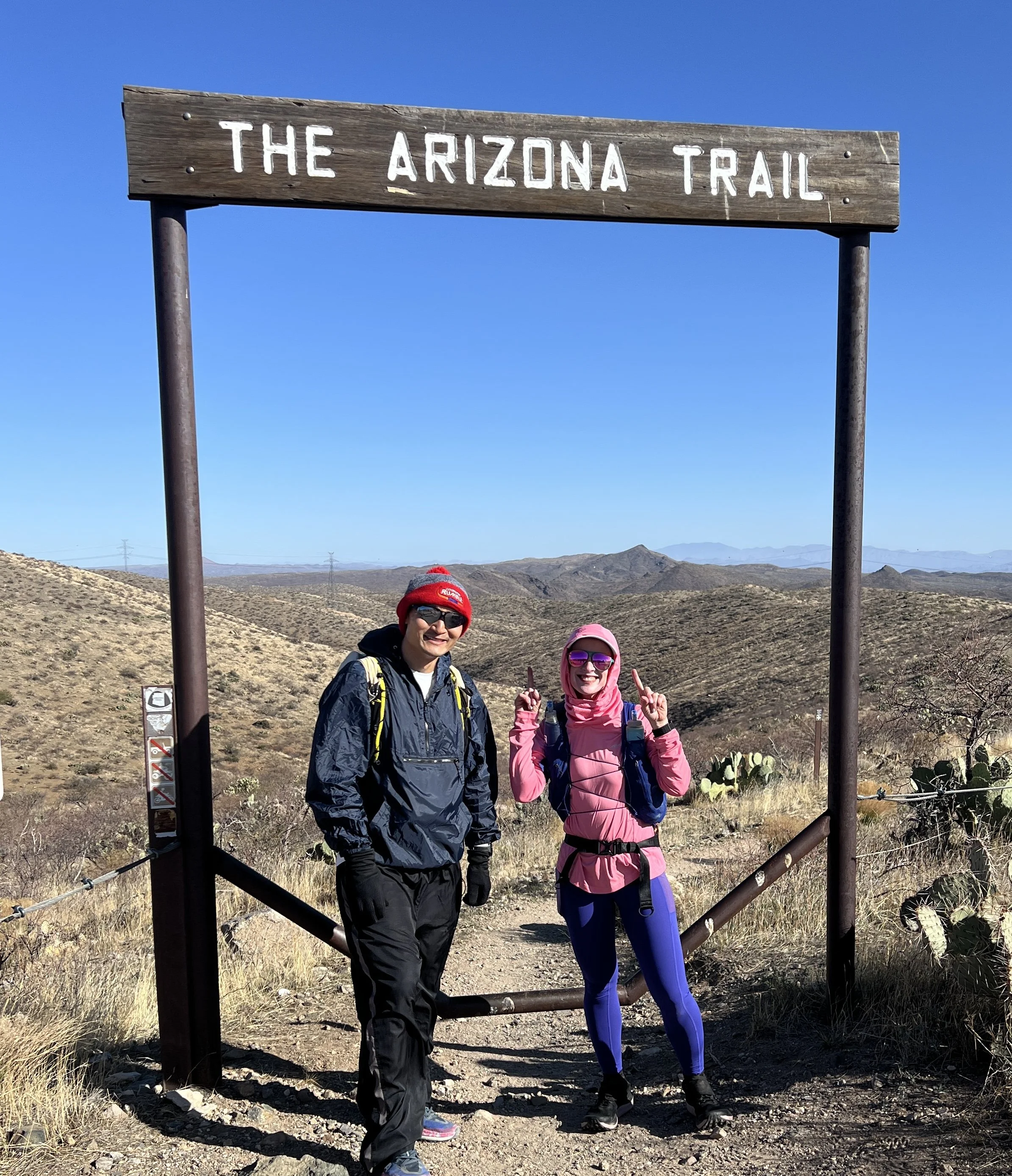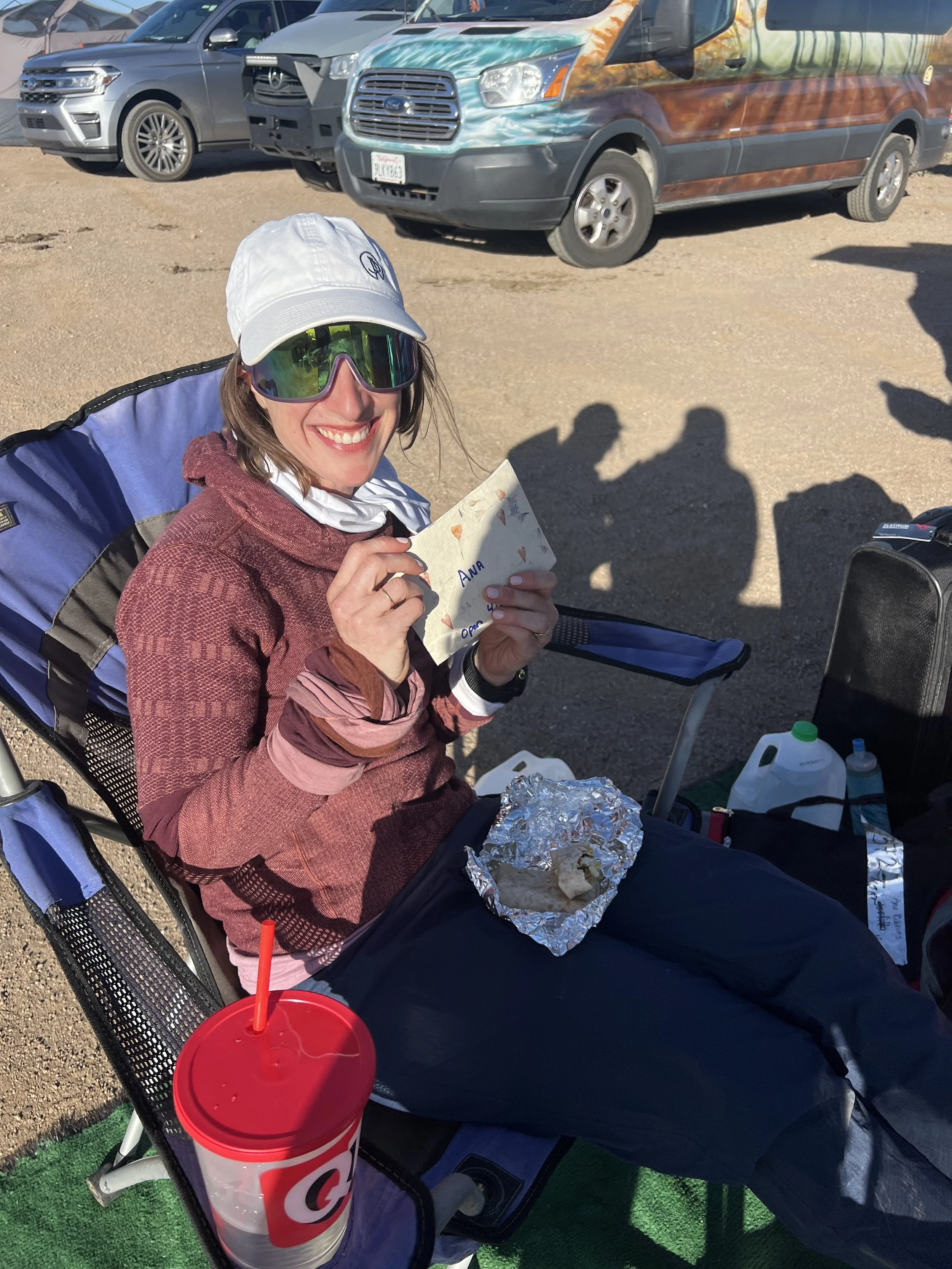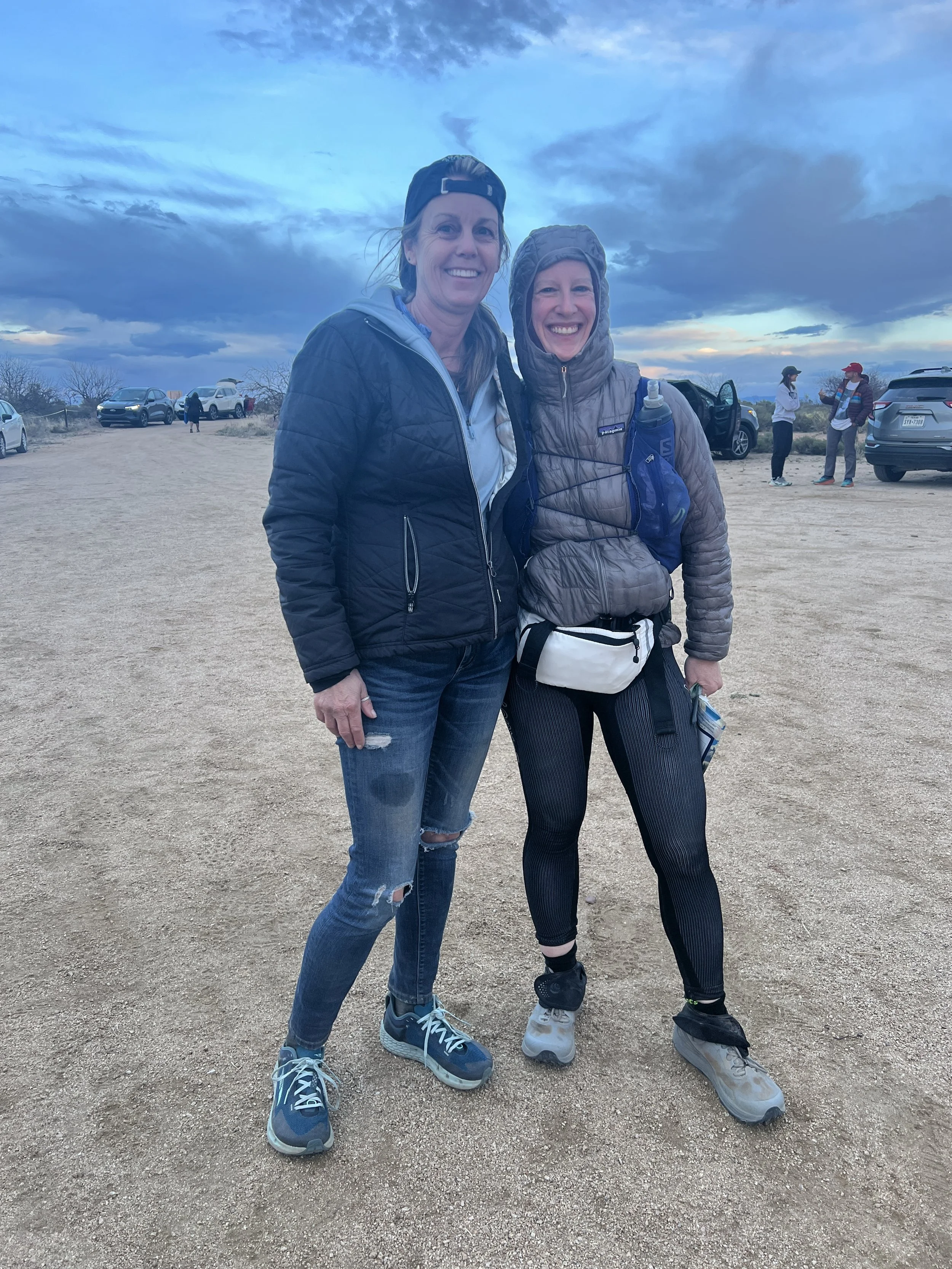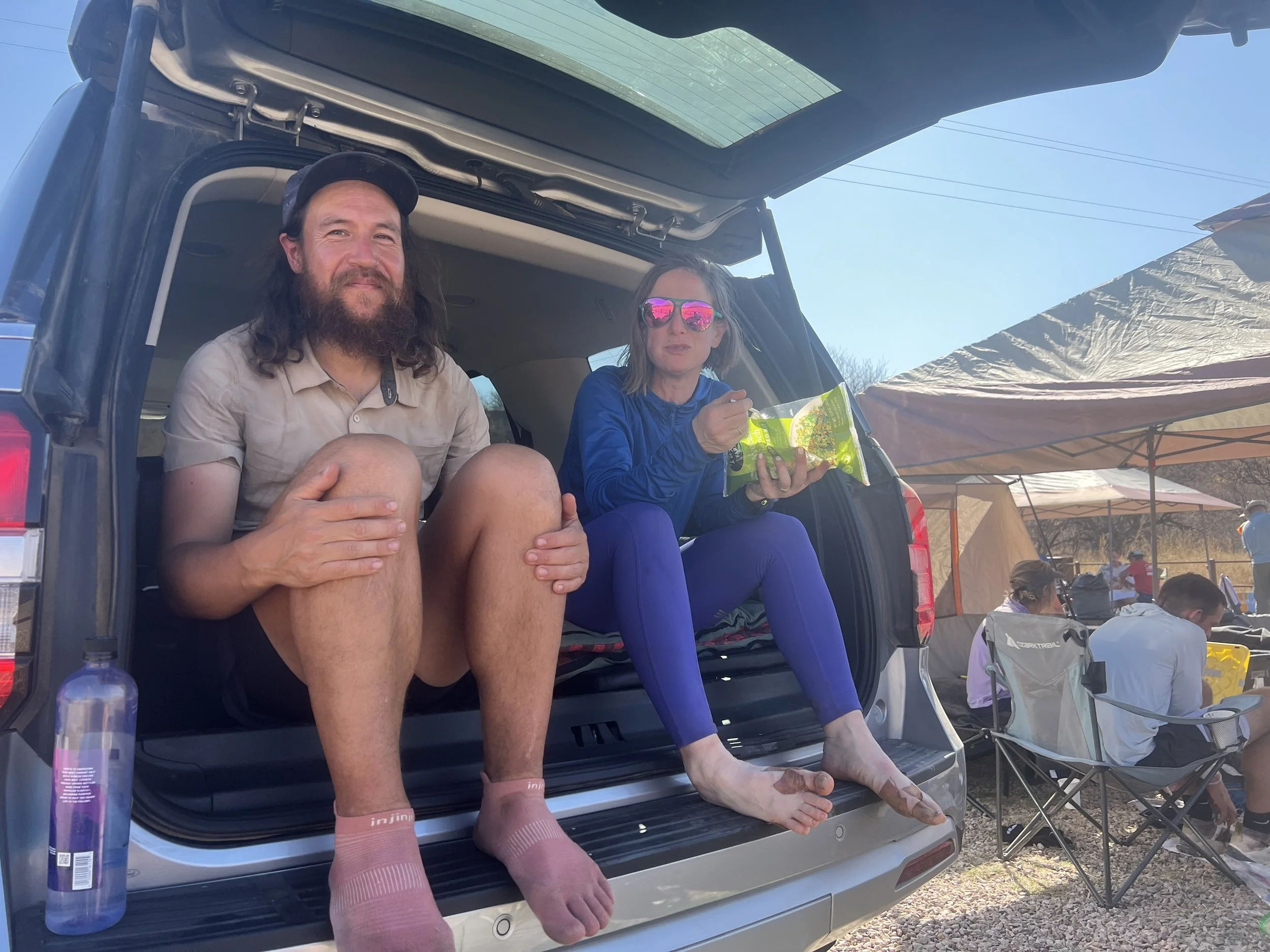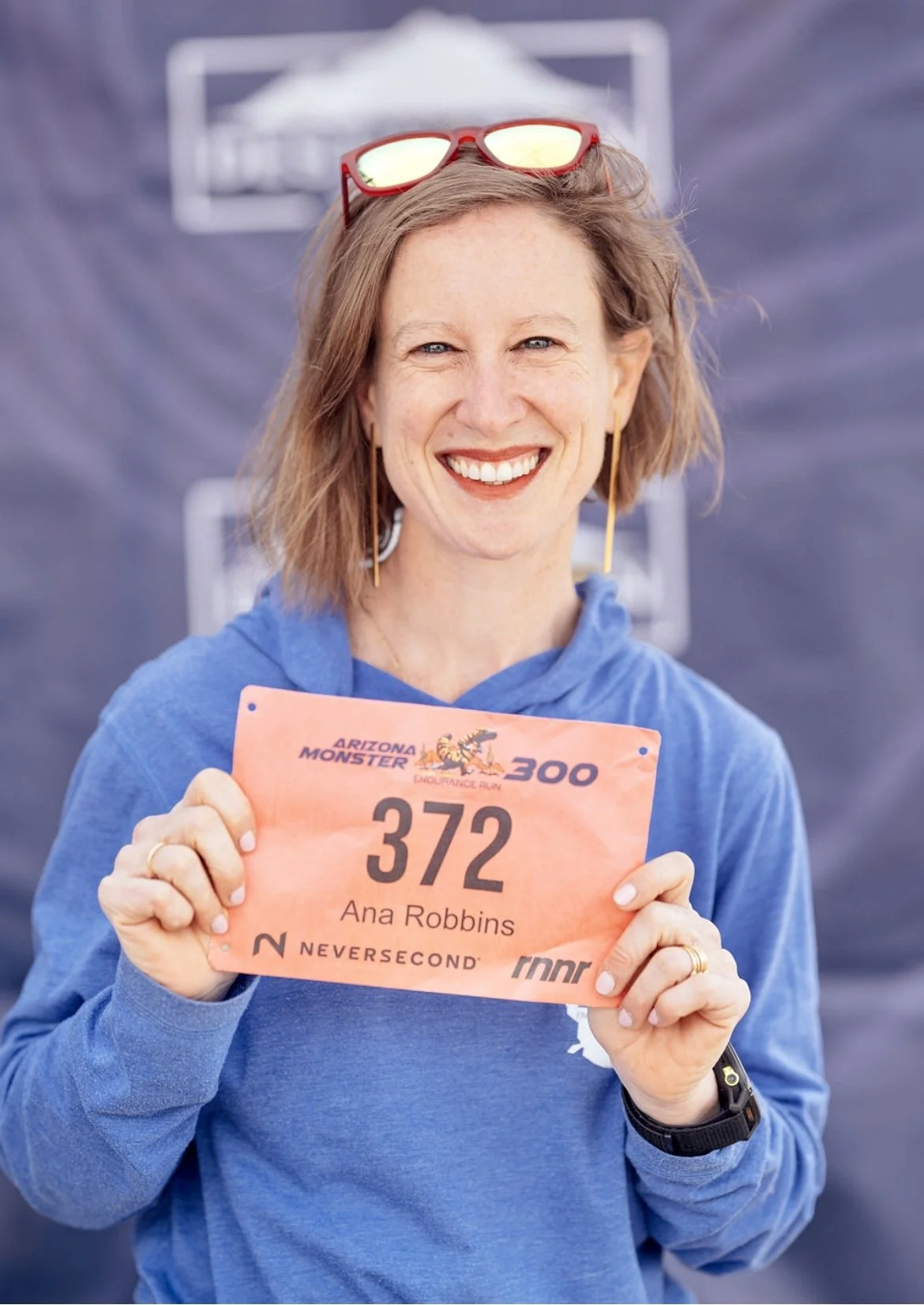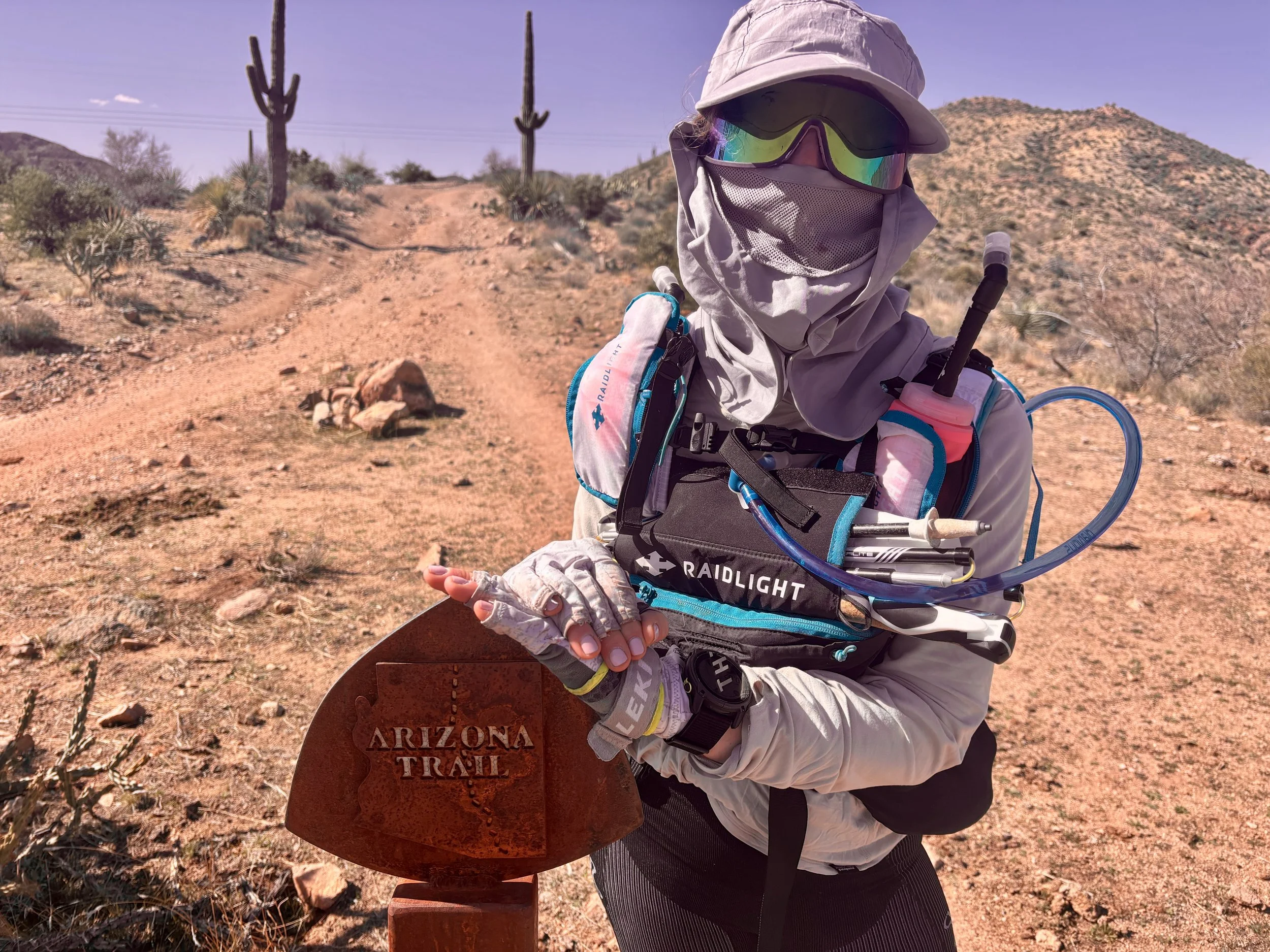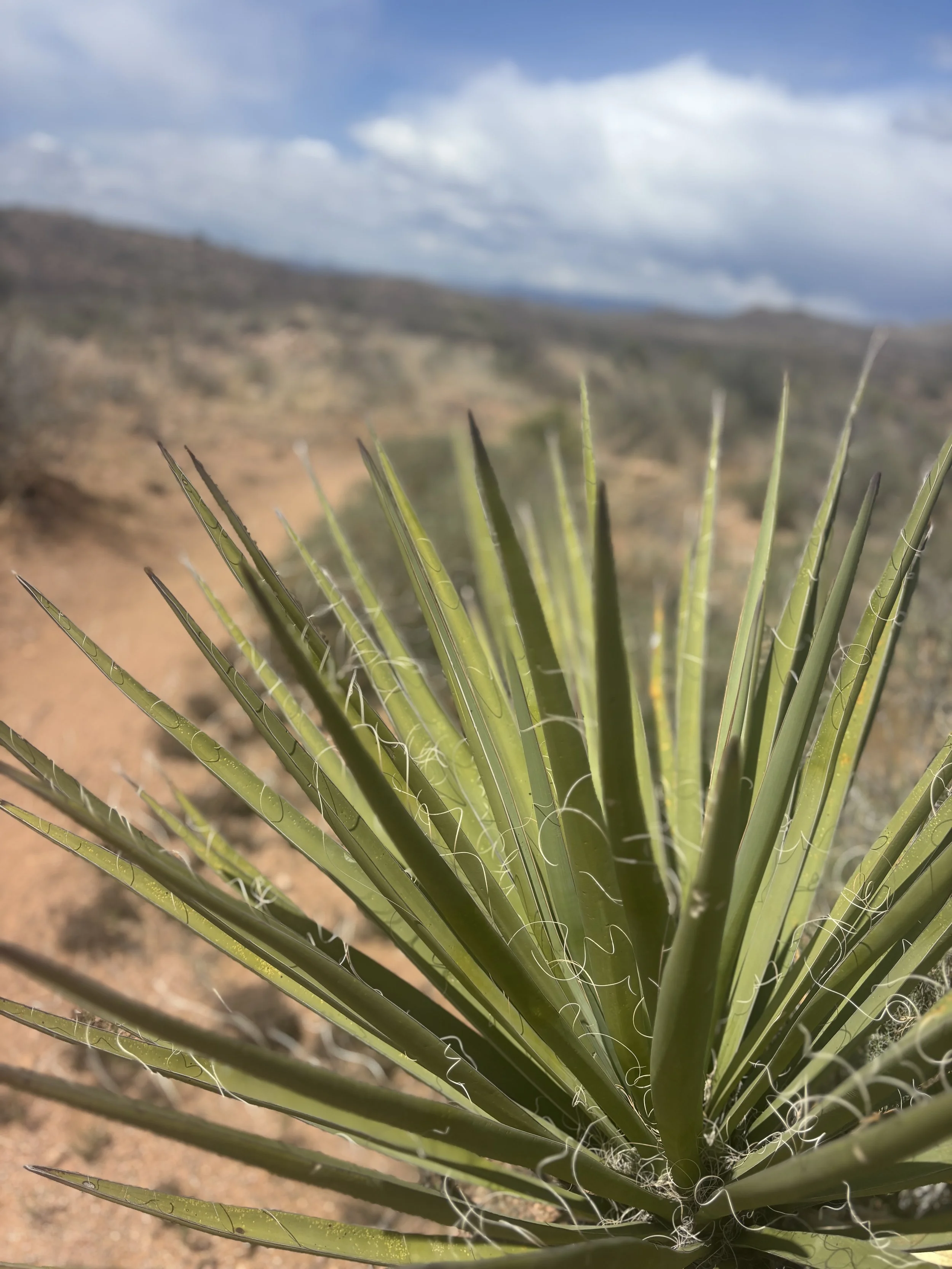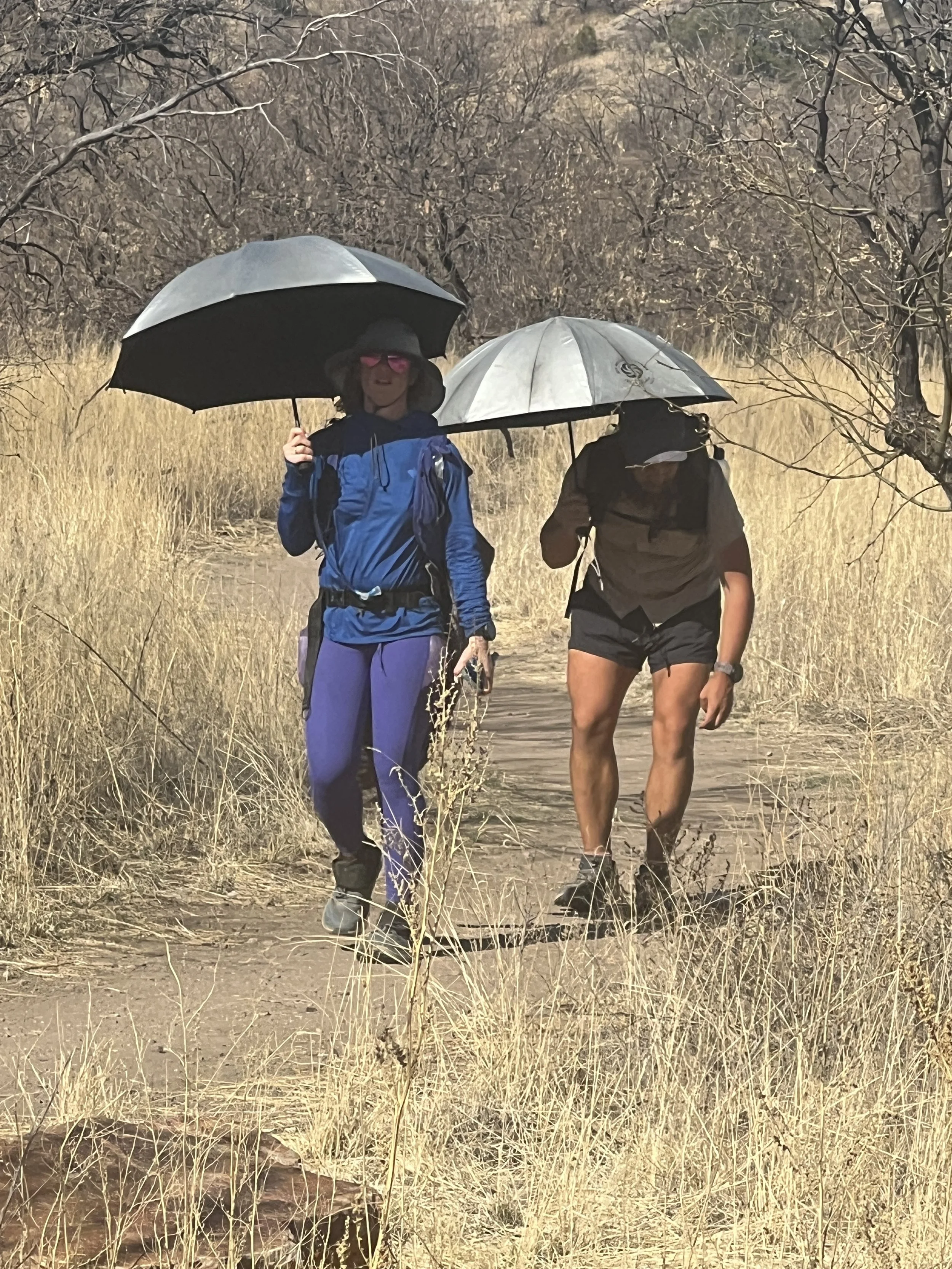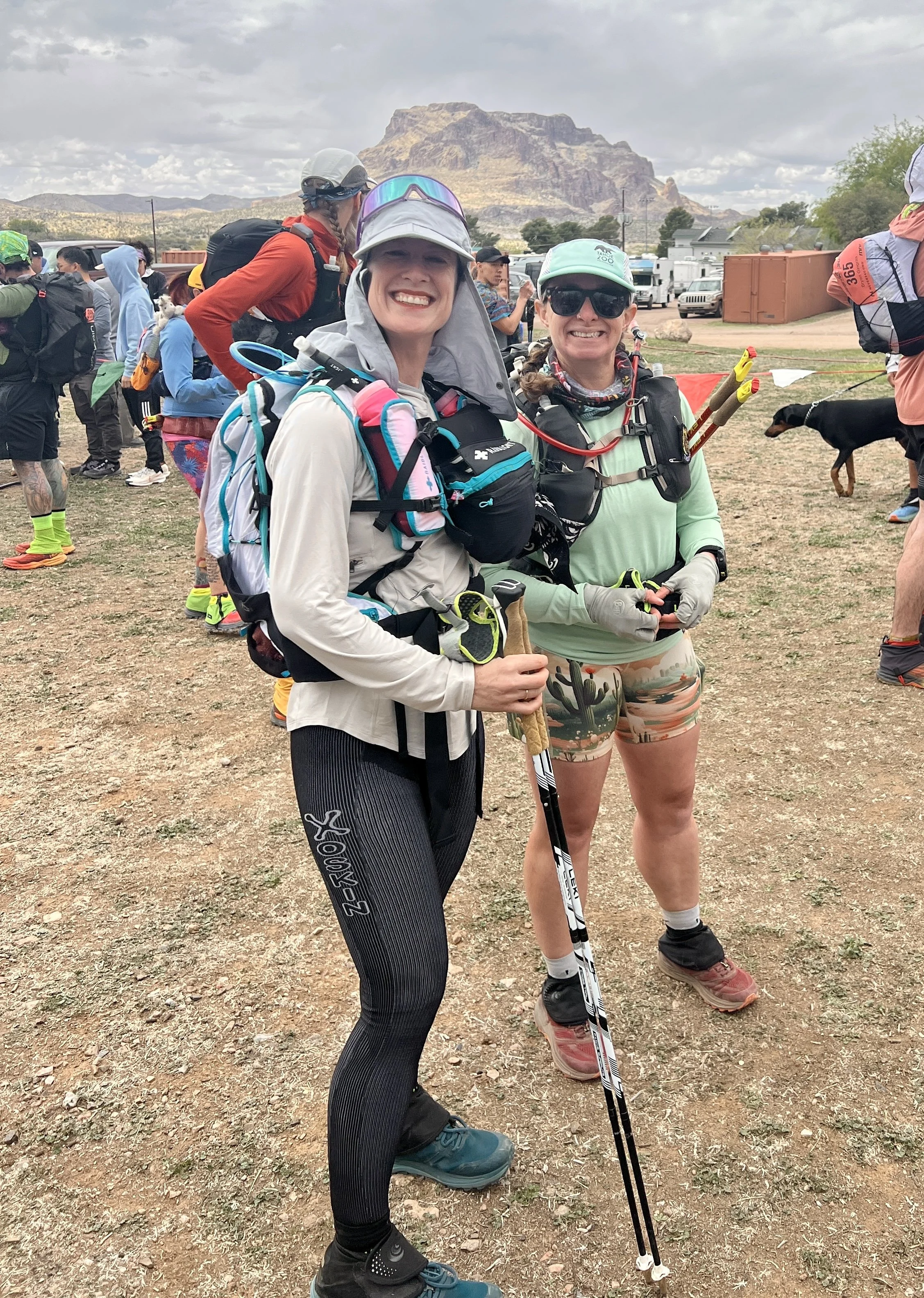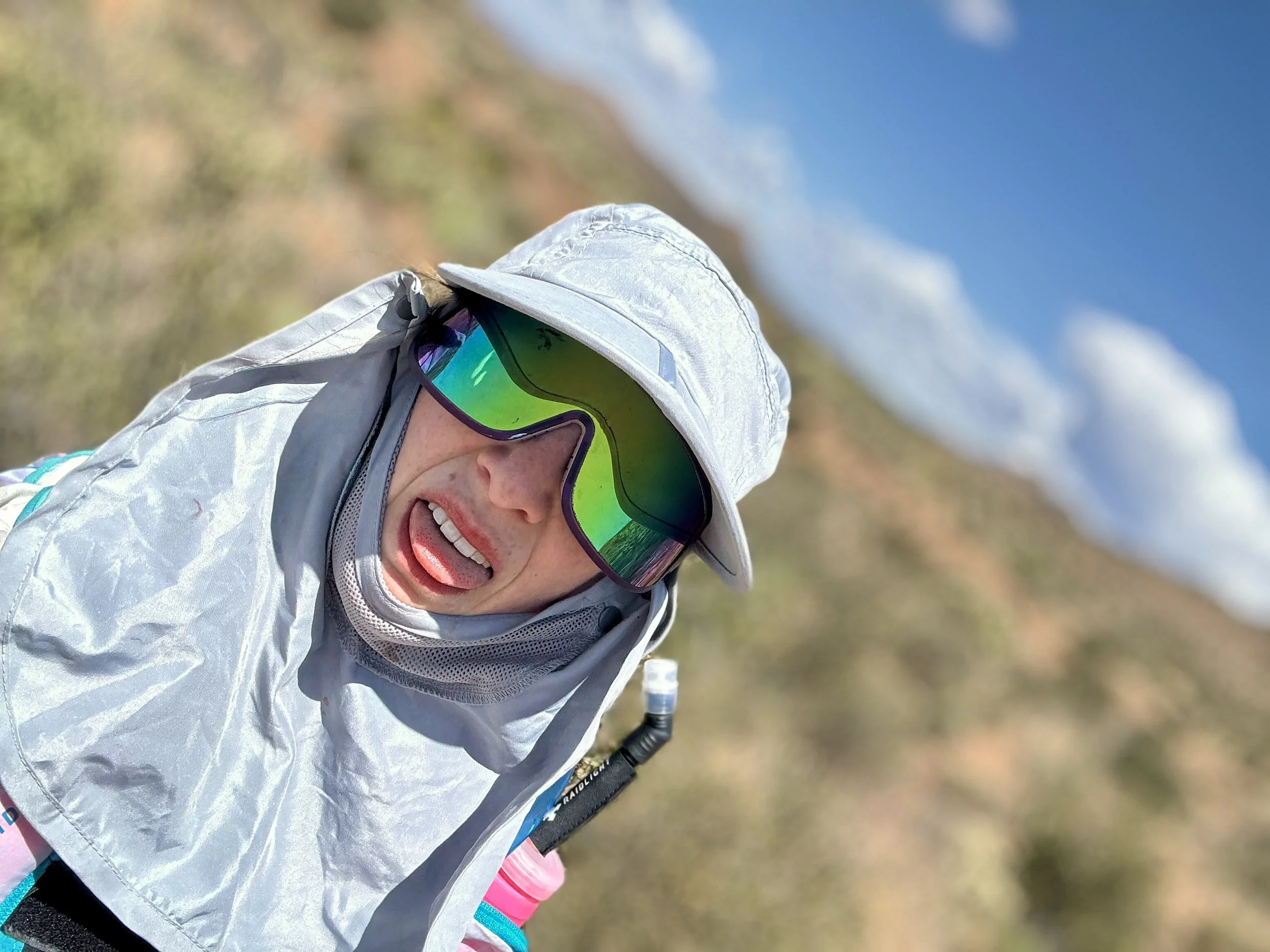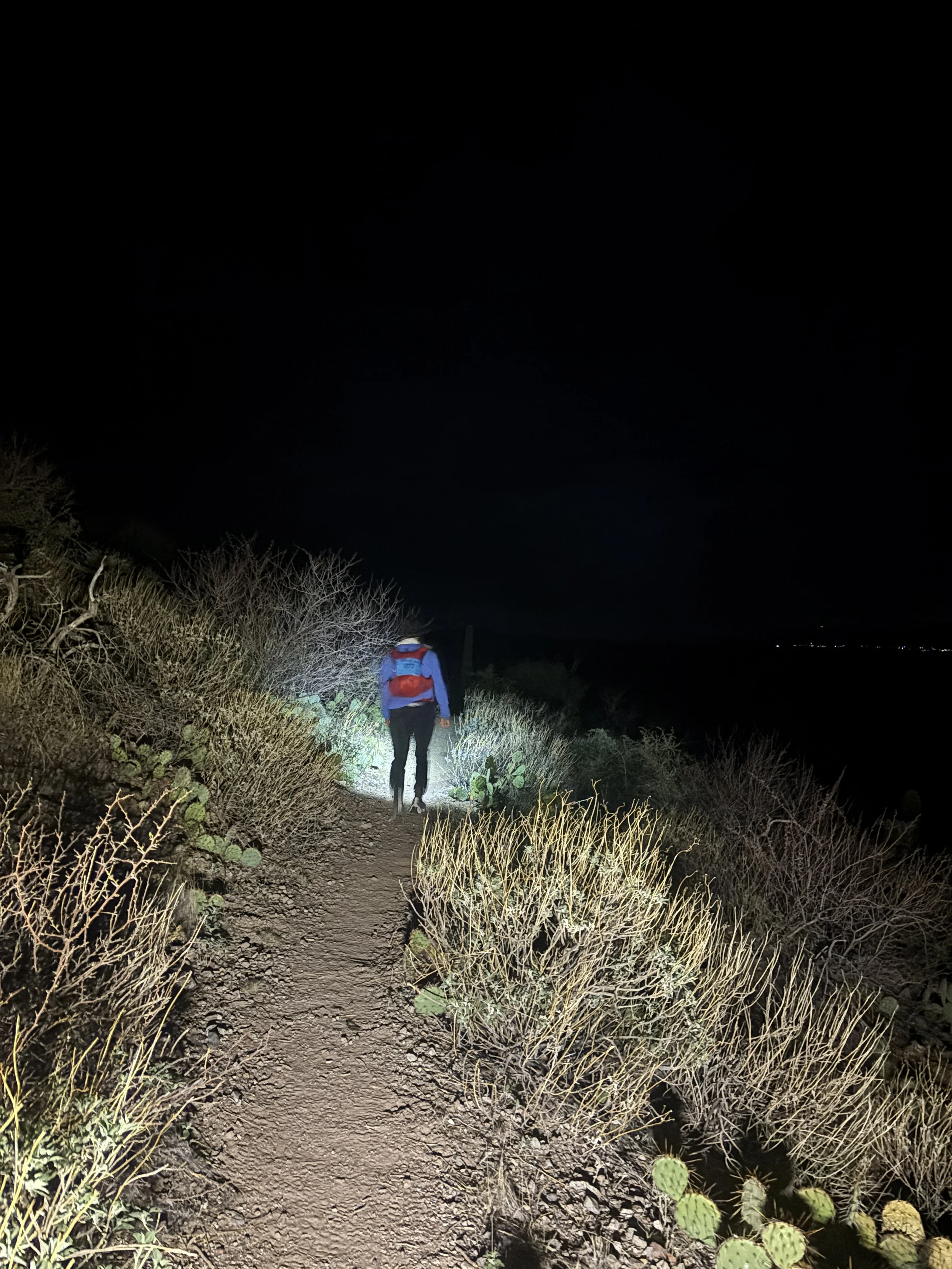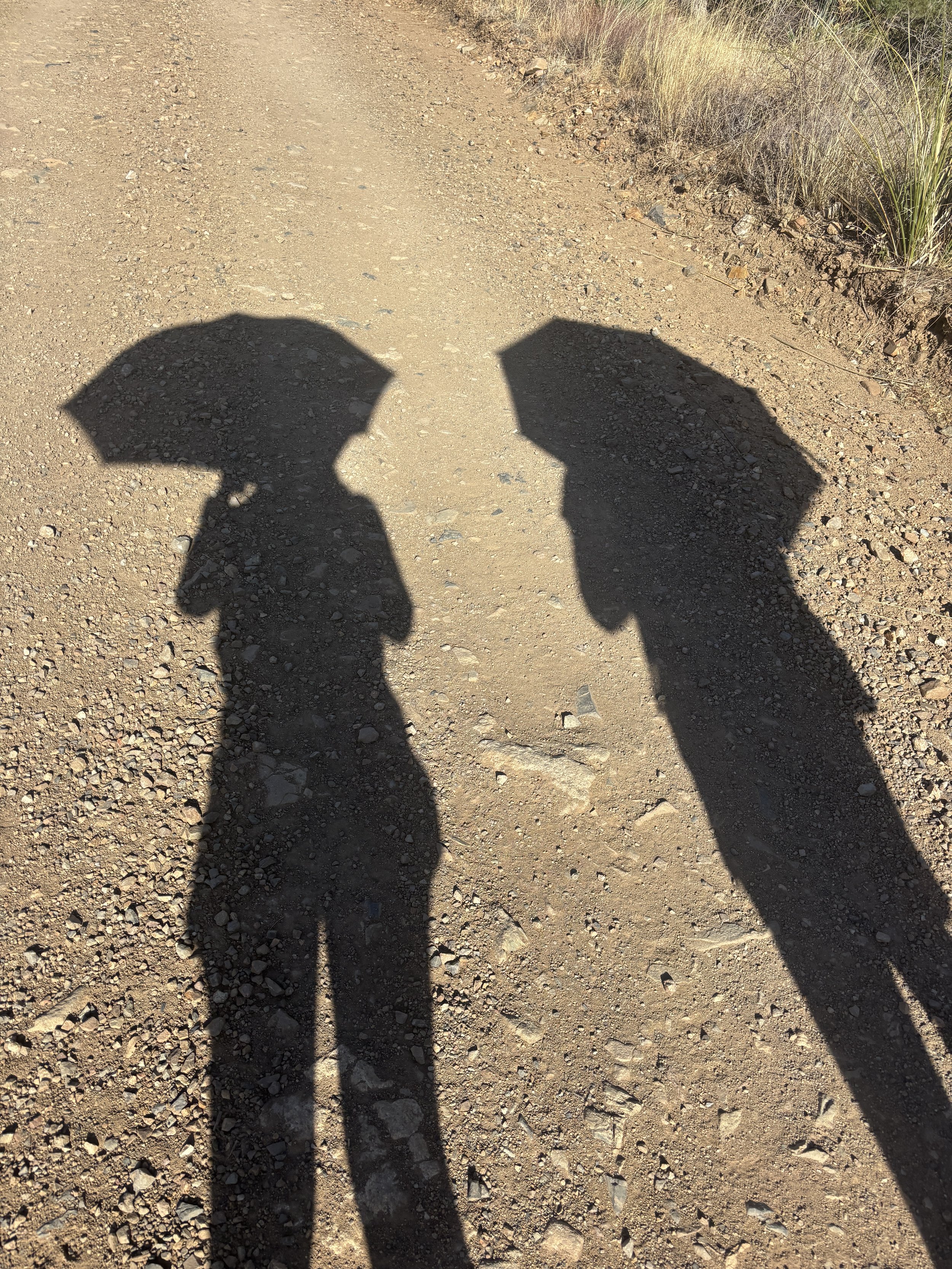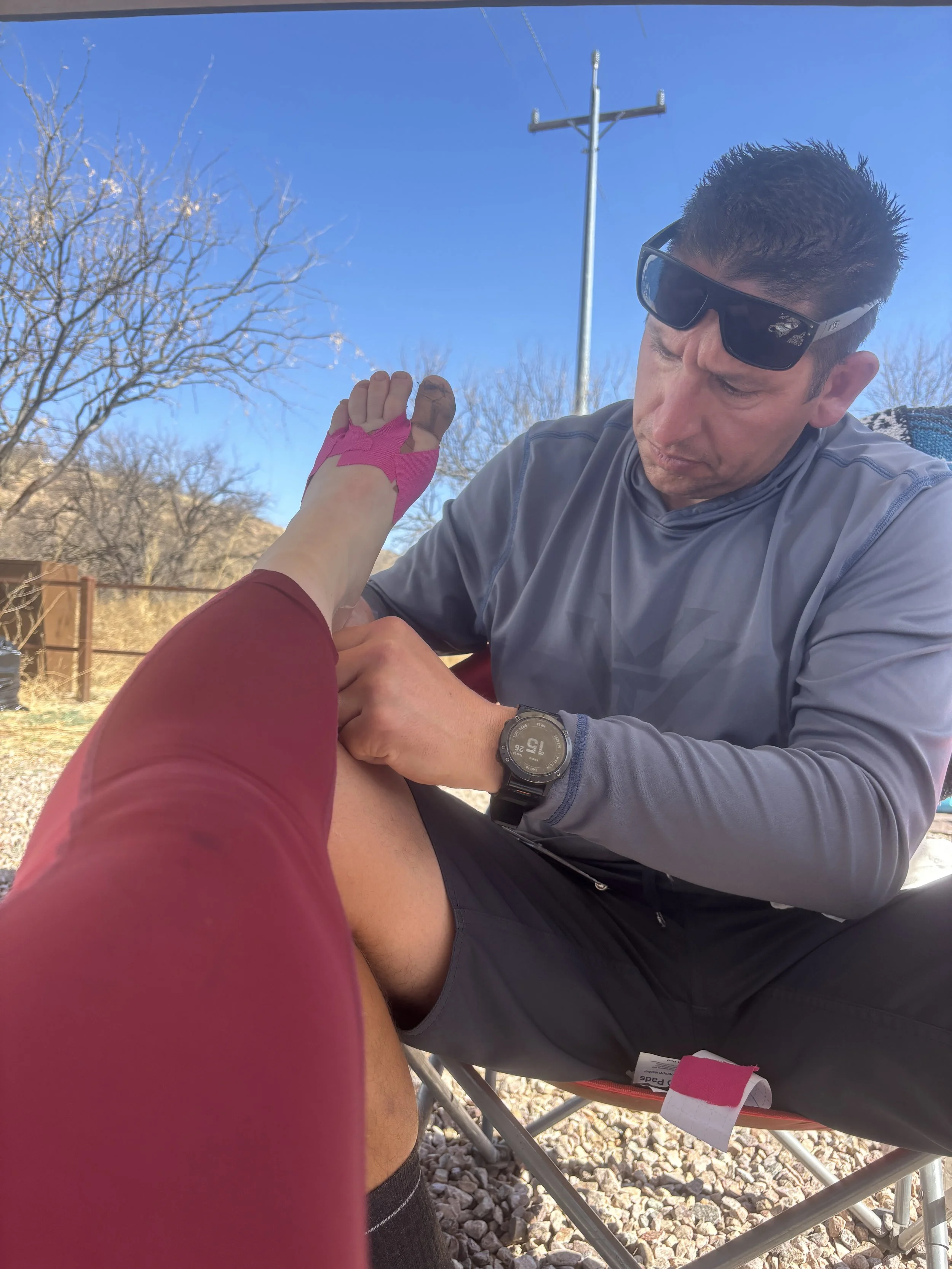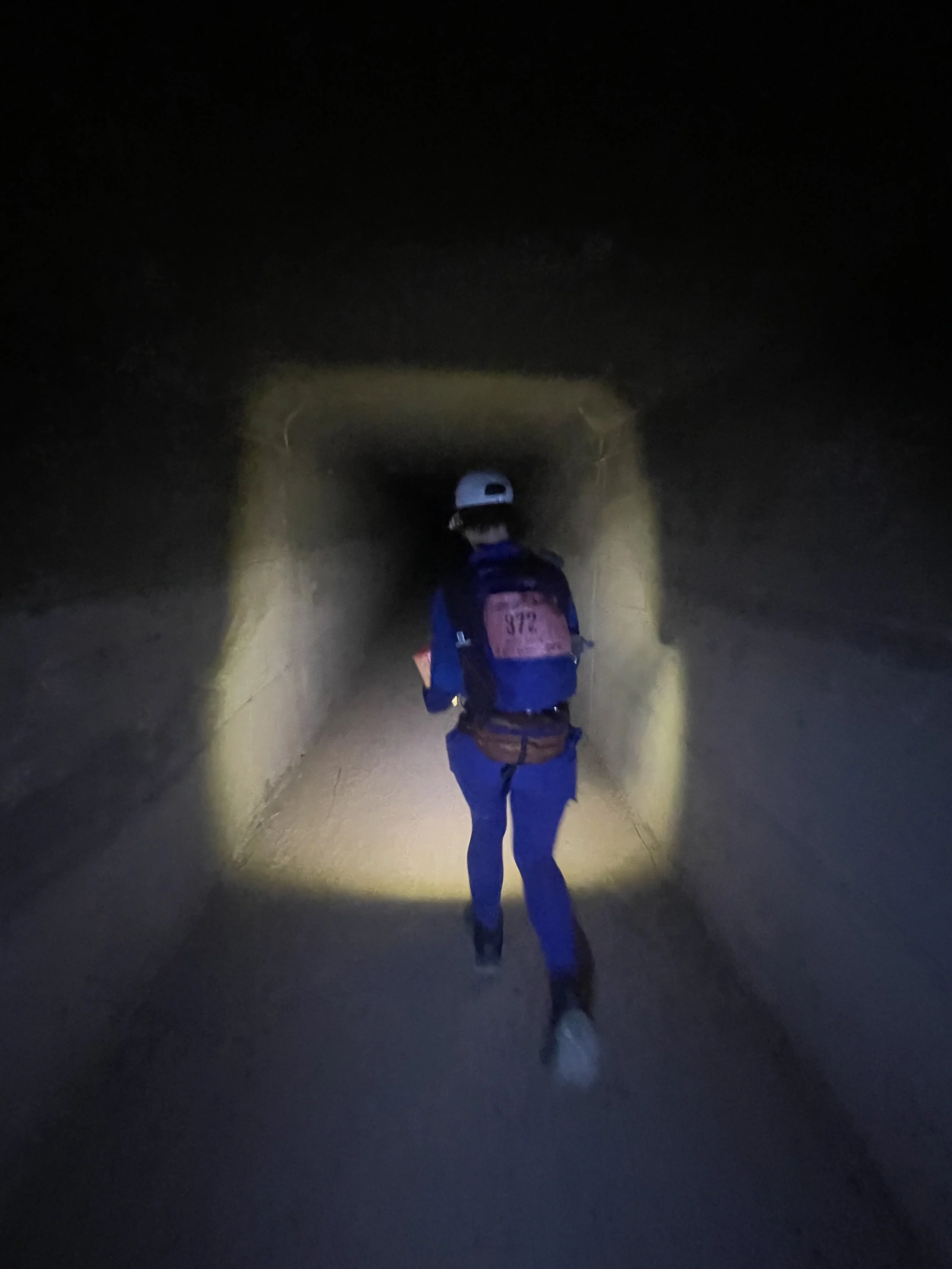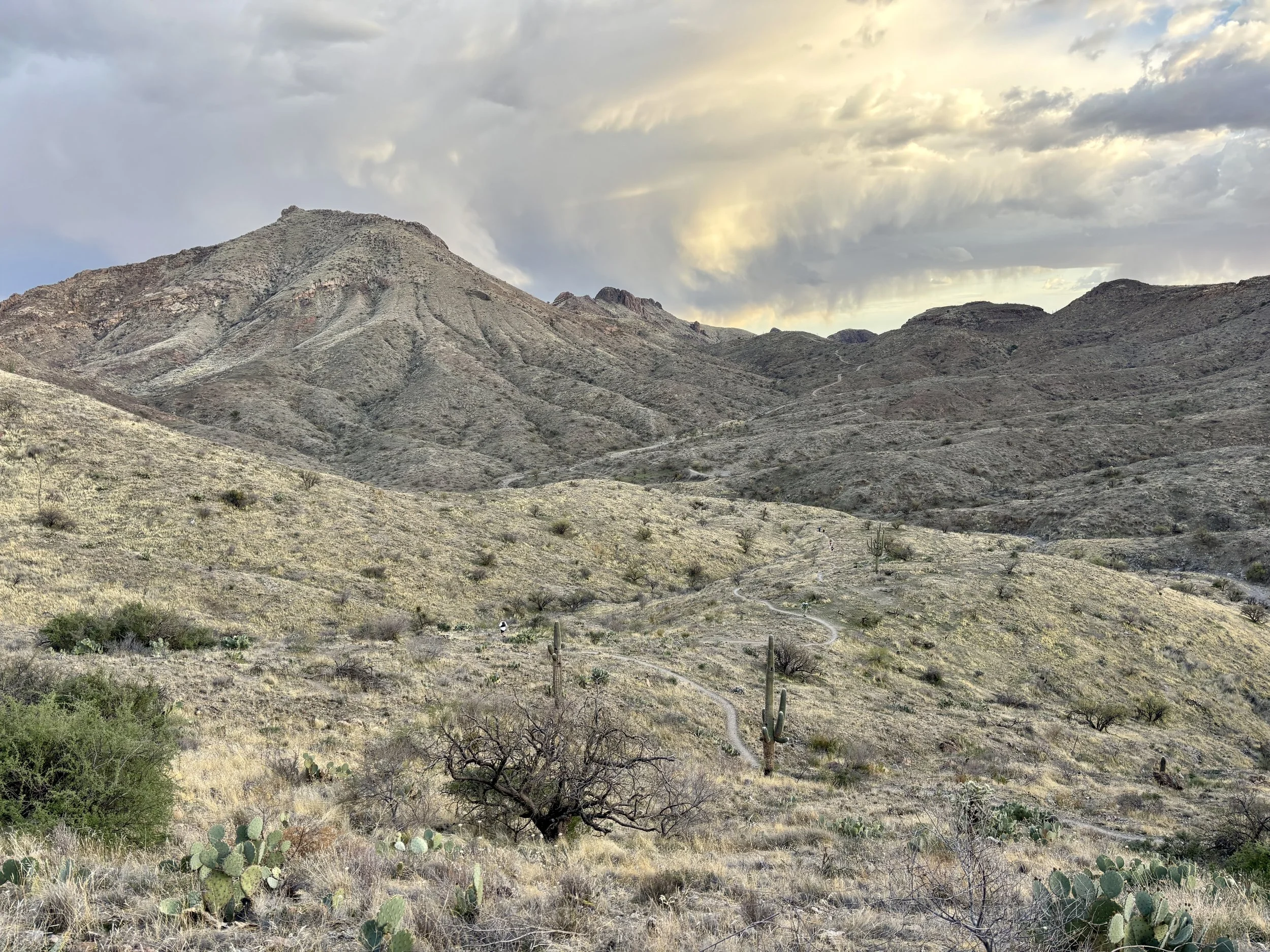A 300 Mile Race to Raise Funds for Jewish Kids Groups
Written by Ana Robbins, JKG CEO, June 2025
A Monster 300 Q&A with Ana Robbins
I just completed the inaugural Monster 300, a 308ish point-to-point ultramarathon across the mountains of Southern Arizona’s Sonoran Desert.
I ran this race to raise funds for the JKG Tuition Assistance Fund. Thank you to everyone who contributed. We have raised $50,000 so far.
Below are some FAQs I get as an ultra-marathoner.
Why would anyone want to run this far?
I run to reach the kind of remote beauty you simply can’t get to any other way. The places I love most don’t show up on scenic drives—they reveal themselves only after hours of sweat, solitude, and effort.
There’s nothing like standing at mile 50, looking across a sun-scorched valley at a mountain on the distant horizon, and thinking: Yeah. I’ll be standing on top of that in a couple days.
I am always up for an extended break from my phone and the constant hum of technology to fully immerse myself in the unspoiled wilderness—the world as G-d made it, wild and whole.
I also run for something bigger than myself: to raise money for the Tuition Assistance Fund at Jewish Kids Groups, the nonprofit I founded 13 years ago. Every mile, every blister, every cactus shadow and cracked lip fuels a larger goal—making sure Jewish kids across the country have the opportunity to learn, grow, and feel deeply connected to their heritage.
And yes, I love seeing how far I can push—how much heat, exhaustion, problem-solving, and sheer grit I can summon. I love feeling the vastness of the world unfold mile after mile, day after day.
More than anything, I love what happens when you put yourself that far out there. You meet parts of yourself—and of other people—you never would otherwise. Out in the middle of nowhere, with nothing but your body, your thoughts, and the trail, something opens. And in that space, you find connection, clarity, and a kind of quiet joy that’s hard to explain but impossible to forget.
How do you train for something like this?
Most people train for a 200+ mile race by gradually building a strong aerobic base—logging 70–100 mile weeks, doing back-to-back long runs, lifting weights, and practicing things like sleep deprivation and race-day fueling.
My training was… less conventional.
I’ll start by saying that I am pretty active in my everyday life– I walk to work, take the stairs, and practice Bikram yoga in a 105-degree room a few days a week. To train for the race, I primarily focus on building a deep well of endurance by consistently running 10 miles a day, every day in October and December (random months). No speed goals; Just get the miles done. Some days I stopped for pizza, while other runs required ice cream.
This basic approach resonated with me because in long ultras, where you might have 20+ miles between aid stations under a blaring sun, it’s not about pace. It’s about persistence. It’s about grit, hydration, and figuring out how to out-stubborn the desert.
That said, I’m not recommending my approach. But it worked for me. It gave me confidence in my endurance and my ability to show up for long, punishing days. My philosophy was: if I can run 10 miles a day in training, I can do 50 miles a day in a race. That’s x5 math. It checks out. (It doesn’t.) At mile 150, my pacer Kevin Russ asked about my training (a pacer is someone who joins me for part of the race—usually in the later miles—to help me stay focused, keep moving, and not totally lose my mind. They run alongside me, help with navigation, and basically make sure I don’t wander off into the desert or forget to eat). When Kevin joined me, I was feeling amazing—cruising past runners who looked completely wrecked. I even convinced my crew to let me ditch my sneakers and run a flat, 20-mile stretch in Crocs. Wildly, it worked.
So, back to training.
Beyond physical endurance, I spent time building mental resilience. Because eventually, no matter how strong or prepared you are, it’s going to get really hard. And you have to be ready for that.
Here’s how I think about mental toughness:
Any time you choose discomfort on purpose—cold plunges, holding your breath, sitting through something emotionally hard—you’re training your mind. You’re practicing staying when every part of you wants to bail.
Each time you stick with discomfort until the timer goes off, you teach yourself something valuable:
You can do hard things.
You can override your brain.
Most importantly– You’re giving yourself one more vote of confidence—one more experience where you chose the larger, predetermined goal over the immediate, easier exit.
Mental endurance doesn’t magically show up in mile 280 of a desert race. It’s built quietly, one tiny, voluntary hardship at a time.
Do you do this alone?
Not even close. Races like this are a team sport disguised as a solo sport.
In ultras this long, you’re out there for days—tired, sun-scorched, and humbled by the sheer size of the earth. And that’s where the walls between people fall away. On the trail, age doesn’t matter. Politics don’t matter. You share food. You swap stories. You remind each other to keep going. Sometimes you leapfrog with the same runners for hundreds of miles—catching up at aid stations, passing each other on a climb, sharing a sunrise or a slice of pizza—until the shared struggle binds you more tightly than years of polite conversation ever could.
At Monster 300, my friend Paul—who started an hour behind me—caught up at mile 7. We ran the next 100 miles together, catching up on life, family, and everything in between. I also shared many miles with my friend Rebecca—sometimes side by side for hours, sometimes reconnecting after long stretches apart. It’s not planned. It’s not forced. It just happens when life is stripped down to movement, survival, and companionship.
I also had a more official team: a world-class crew led by Coach Trena Kennedy (although, important disclaimer: she was not actively coaching me for this race and therefore bears no responsibility for my questionable training decisions), who kept me fed, warm, un-blistered, and—most importantly—moving in the right direction. And I had three incredible pacers—David, Krista, and Kevin—each of whom brought their own kind of magic to the journey.
David and I took on Mount Lemmon together—52 miles, 10,000 feet up and 10,000 feet down. We started the climb with a huge mistake: assuming our crew would meet us at the next aid station. Based on that (incorrect) assumption, I ditched a bunch of essentials—extra water capacity, my puffy jacket, my waist lamp. When we realized the crew wasn’t coming, we improvised. I raided my drop bag, we loaded up on food and water, and made a pact to summit before nightfall. The miles flew by as we built a fast friendship, talking about business, AI, family, and everything else under the sun. It’s one of my favorite memories from the race.
Krista, a dear friend who paced me at Cocodona 250 in 2023, returned to pace me again. And she got the worst miles of the race: about 50 soul-sucking miles of flat asphalt along a never-ending bike path in Tucsan. No mountains. No natural beauty. Just pavement. We were joined by Rebecca for some of it, and morale… got creative. As the sun rose, we reached a gas station. I bought nuts, donuts, coffee, seltzer, gum, cheese, eggs, candy—basically a bag of victory snacks—and felt slightly human again.
The next official aid station was a free-for-all: no volunteers, just two kind runners who had dropped from the race helping out. It was sweltering, and the next stretch included a ten-mile highway death march under a blazing sun. We kept moving.
Sometimes the miles are memorable because of the chaos. Other times, they stick with you because of the calm. Kevin was my calm. We spent over 30 hours together crossing deserts, climbing mountains, talking about childhoods, inventions, Cocodona, life, everything.
There’s no way to describe the bond that forms when you’ve already run 150 miles, you’re cracked open by exhaustion, and someone simply shows up to walk beside you through the night. No agenda. No ego. Just presence.
There’s nothing else like it. And it’s one of the reasons I keep coming back.
What do you eat during a 300-mile race?
Anything and everything I can get my hands on.
This race didn’t have amazing food options, in my opinion, but I came prepared. I packed dozens of little 200-calorie snack bags—nuts, dried fruit, crackers, candy—the diet of a feral raccoon. My goal was simple: eat one snack bag every hour, whether I felt like it or not.
I also relied heavily on the dehydrated backpacking meals I’d stashed in my drop bags—pre-packed gear and food bags that are sent ahead to specific aid stations along the course. You don’t carry them; they’re waiting for you when you get there, like ultra-running treasure chests.
Between those, aid station fruit and pasta, and the occasional veggie burger, I ate… okay.
The real food MVP? My crew chief and forever coach, Trena. She saved me more than once—showing up with a giant pizza at one aid station and, later, two glorious foot-long veggie subs. Plus lots (and lots) of coffee.
Without her, my race nutrition strategy might’ve been limited to sad pita “pizza” and rage.
How do you sleep?
Strategically—if not always comfortably.
The race took me 155 hours—more than six days. You’re allowed to sleep whenever, wherever, and for as long as you want... but the clock never stops. So I slept when I could, where I could: on the side of the trail, curled up in the back of my crew vehicle, or occasionally on top of a stranger’s laundry.
At one point—Pistol Hill Aid Station—I was wrecked. The station was uncrewed and overwhelmed, racers wilting under two tiny tents that barely offered shade. It looked like a battlefield, but with more trucker hats and Tailwind bottles. Off to the side, I spotted a random RV and thought: there’s definitely a bed in there.
I asked the guy standing nearby if I could crash inside. Turns out, it wasn’t his RV—it was his friend’s. But he looked me over and said, “Well… if it’s an emergency, I’m sure my buddy wouldn’t mind.” I assured him it was.
A few minutes later, I was passed out on top of someone’s clean laundry in a 100-degree tin-can sauna of a camper—sleeping for two glorious hours. That nap saved my race. I woke up,
rehydrated, and decided to shift strategies entirely: from then on, I’d sleep during the hottest part of the day and race through the night.
Usually, my aid station stops range from 30 minutes to 3 hours—just enough time to reset and stay functional. But at mile 290, with only 18 miles to go, I made an unorthodox call. It was 88 degrees, the sun was blazing, and I could’ve pushed through to finish faster. But I wasn’t just thinking about this race—I was thinking about the next one: Cocodona 250, just three weeks away.
So I stopped. Slept. Recovered. Let the worst heat of the day pass. And then set out to finish strong, safe, and ready for whatever comes next.
Conclusion: Why It Matters
The Monster 300 wasn’t just a race—it was a reminder. A reminder that we’re all capable of going farther than we think, especially when we surround ourselves with the right people, the right mindset, and a goal that matters more than comfort or convenience.
For me, that goal is Jewish Kids Groups. Every mile I ran through the desert was fueled by that purpose: to raise $50,000 for our Tuition Assistance Fund, so that more families can access the magic of Jewish After-School. If you’d like to support JKG/my race, please do so here.
If you’ve made it this far in the report (and, well, if I can run 300 miles, I trust you to read a few thousand words), I hope you’re walking away with a little more clarity about what it takes to do something hard, something wild, something deeply worth it. Whether it’s running a race, building a nonprofit, or just getting through the messy middle of a tough week, the same principles apply:
Endurance is built one uncomfortable moment at a time.
Success takes a team.
Grit can get you far, but purpose gets you farther.
This race may be over—but I’m just getting started.
See you at the next start line,
Ana

